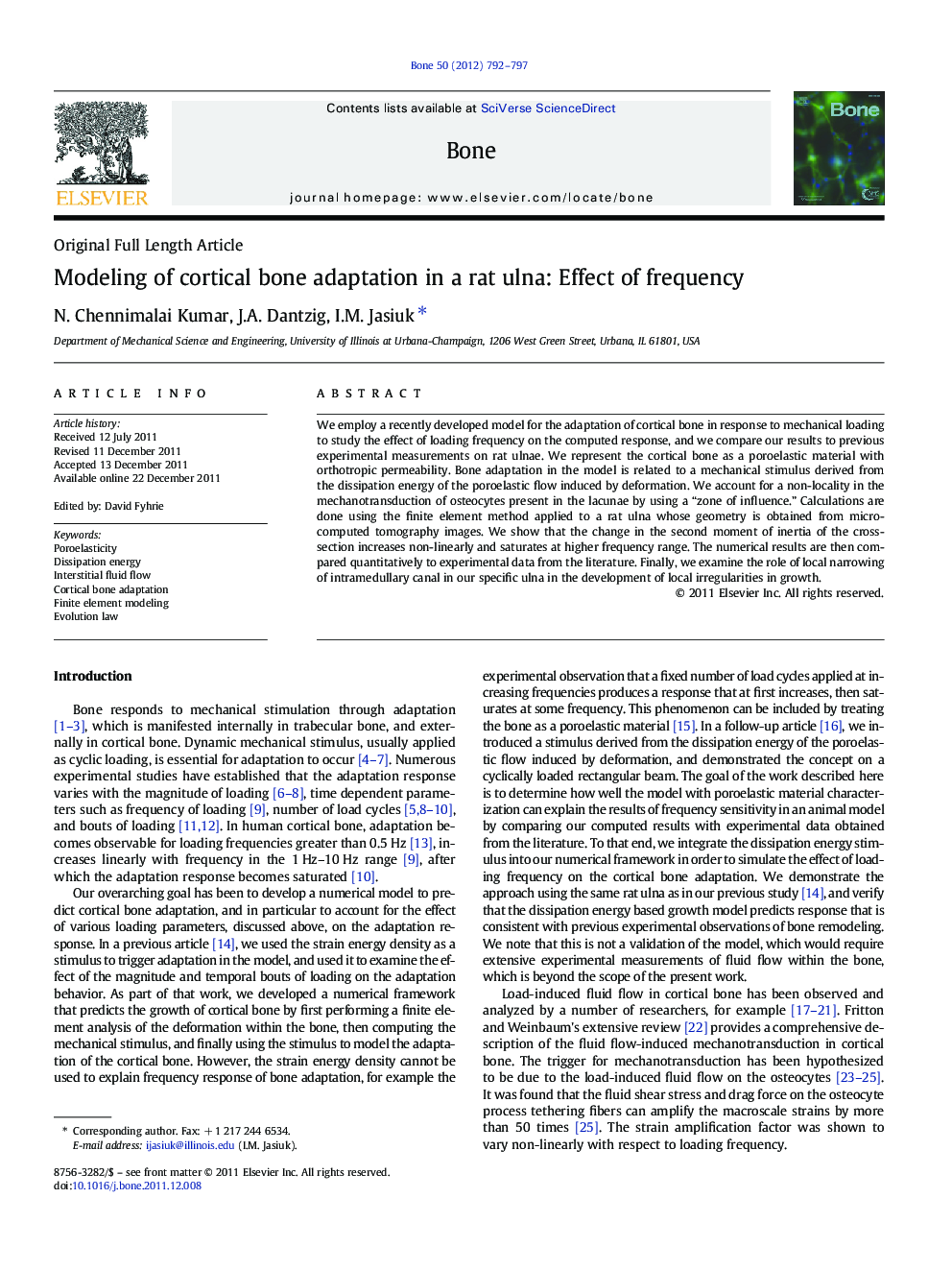| Article ID | Journal | Published Year | Pages | File Type |
|---|---|---|---|---|
| 2779672 | Bone | 2012 | 6 Pages |
We employ a recently developed model for the adaptation of cortical bone in response to mechanical loading to study the effect of loading frequency on the computed response, and we compare our results to previous experimental measurements on rat ulnae. We represent the cortical bone as a poroelastic material with orthotropic permeability. Bone adaptation in the model is related to a mechanical stimulus derived from the dissipation energy of the poroelastic flow induced by deformation. We account for a non-locality in the mechanotransduction of osteocytes present in the lacunae by using a “zone of influence.” Calculations are done using the finite element method applied to a rat ulna whose geometry is obtained from micro-computed tomography images. We show that the change in the second moment of inertia of the cross-section increases non-linearly and saturates at higher frequency range. The numerical results are then compared quantitatively to experimental data from the literature. Finally, we examine the role of local narrowing of intramedullary canal in our specific ulna in the development of local irregularities in growth.
► We model bone adaptation in a rat ulna using a finite element method. ► We represent bone as a poroelastic material with orthotropic permeability. ► In adaptation law we use the mechanical stimulus derived from the dissipation energy of the poroelastic flow. ► We account for nonlocality of mechanotransduction by osteocytes using a zone of influence. ► We show that the change in the second moment of inertia of the cross-section increases non-linearly.
